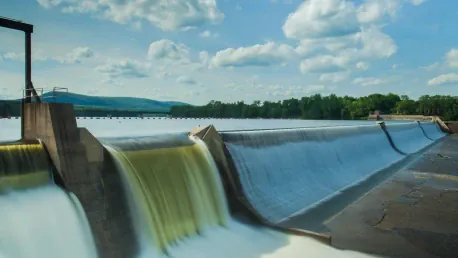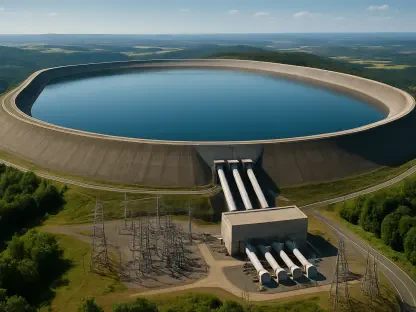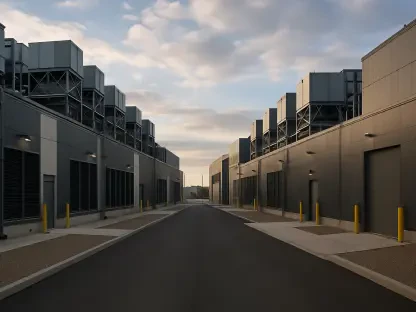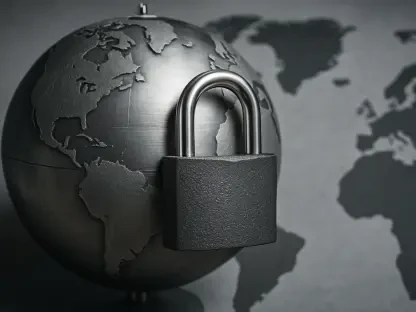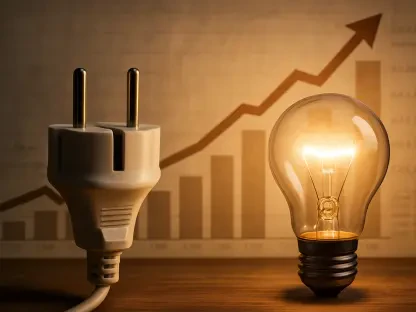The establishment of the National Energy Dominance Council by President Donald Trump marks a pivotal moment for U.S. energy policy, particularly in advancing the potential of federally owned hydropower facilities. Abundant, affordable electricity is fundamental to America’s economic future, supporting diverse industries from advanced manufacturing to data centers. This council offers a rare chance to develop a cohesive federal strategy for achieving energy dominance, addressing load growth needs in the power sector.
Federal Influence on Energy Policy
The Complexity of the U.S. Electrical Sector
The U.S. electrical sector is a complex network of regional operators, state regulators, and investor-owned utilities that exert significant influence over generation investments. Federal mechanisms like the Loan Programs Office and smart grid grants can incentivize power sector investments, but the government’s direct levers to meet load growth are limited. Despite initiatives and programs designed to encourage development, aligning the diverse stakeholders involved in the sector is a challenging task.
This network often results in fragmented efforts where regional priorities may not always align with federal goals. The interplay between state regulations, regional power authorities, and private utilities creates a patchwork system that can be resistant to broad, cohesive strategies. While federal initiatives can provide incentives, they often lack the direct control to enforce actions that meet national objectives comprehensively. This disparity is particularly relevant when considering the growing need for sustainable and reliable energy sources to support the country’s economic growth and environmental goals.
Hydropower: A Unique Federal Asset
Hydropower stands out as a unique exception in the energy landscape. The majority of U.S. hydropower facilities are federally owned, providing around 80 GW of generating capacity and over 90% of the nation’s energy storage through pumped storage hydropower. This federal control offers an unparalleled opportunity to meet increasing load demands. Unlike other sectors heavily influenced by regional and private stakeholders, hydropower remains largely under federal jurisdiction, presenting a unified front for potential upgrades and expansions.
This control enables the federal government to implement changes and enhancements more swiftly and coherently than in other sectors. By focusing on hydropower, the government can drive significant advancements without the hindrance of regional idiosyncrasies. Given the aging infrastructure, targeted investments in modernization and expansion can yield substantial increases in capacity and efficiency, ensuring hydropower remains a cornerstone of the national energy strategy.
Strategies for Enhancing Hydropower Capacity
Powering Non-Powered Dams
One significant method to enhance hydropower capacity is by converting non-powered dams into power-producing facilities. Currently, only 3% of the nation’s dams generate power. A U.S. Department of Energy study suggests that converting existing dams could add an additional 4 GW of capacity, with most high-capacity opportunities within federal dams. This potential can be unlocked through strategic investments and initiatives designed to retrofit these structures, turning dormant assets into active energy producers.
This approach not only increases capacity but also maximizes the use of existing infrastructure, reducing the need for new dam construction and the associated environmental impacts. By leveraging the current dam network, the federal government can enhance energy production efficiently and sustainably. Furthermore, these initiatives can serve as a catalyst for local economies, creating jobs and stimulating economic activity in the regions surrounding the converted dams.
Modernizing Existing Facilities
Another approach involves modernizing aging hydropower facilities, many of which are over 60 years old. Upgrading these facilities could potentially add 5 GW of capacity and revitalize critical infrastructure, ensuring their continued contribution to the energy grid. Modernization projects can include the replacement of outdated turbines, generators, and other essential equipment with the latest technology, enhancing efficiency and output while reducing maintenance costs and operational downtime.
Such upgrades not only extend the operational life of these facilities but also improve their overall performance. Updated equipment can better handle the variable loads and demands of the modern grid, integrating more seamlessly with other renewable sources like wind and solar. As hydropower facilities are brought up to contemporary standards, they become more reliable and capable of supporting the nation’s increasing energy needs while enhancing grid stability and resilience.
Streamlining Permitting and Licensing
Addressing Regulatory Burdens
The Federal Energy Regulatory Commission (FERC) licensing process is notably more cumbersome than equivalent processes in other countries, adding significant uncertainty to development timelines. Streamlining this process is crucial for enhancing hydropower capacity. Long and complex regulatory requirements often deter potential investments and slow down much-needed upgrades and expansions.
A more efficient and predictable regulatory environment would encourage greater investment in the sector, facilitating faster development and modernization of hydropower facilities. By reducing bureaucratic delays and uncertainties, the federal government can create a more attractive landscape for energy companies to invest in hydropower projects. This would not only speed up capacity enhancements but also promote innovation within the industry.
The Role of a Hydropower Czar
A proposed ‘hydropower czar’ within the National Energy Dominance Council could champion efforts to streamline FERC licensing and renewal processes. This role would also involve coordinating with states on clean water act permit timelines, ensuring a more efficient regulatory environment. The hydropower czar would act as a central figure in advocating for reforms and improvements in the regulatory framework, ensuring that hydropower projects face fewer obstacles and faster approval times.
This position would also facilitate better communication and coordination among federal and state agencies, harmonizing their efforts to promote hydropower development. By having a dedicated leader focused on this key sector, the government can ensure that hydropower remains a top priority in national energy policies and strategies. The hydropower czar would therefore play a pivotal role in realizing the potential of federally owned hydropower facilities and driving the sector’s growth.
Hybridizing Energy Infrastructure
Leveraging Existing Sites
Federal hydropower operators can leverage existing interconnection sites to hybridize energy infrastructure. This could include integrating batteries or implementing floating solar panels, which also help reduce evaporative water losses. Hybrid systems can significantly enhance the versatility and efficiency of hydropower plants. By incorporating batteries, plants can store excess energy generated during peak production periods for use when demand is higher, smoothing out the supply of electricity to the grid.
Floating solar panels offer a dual benefit; they provide renewable energy and help conserve water by reducing evaporation. These solar installations can be placed on reservoirs and other bodies of water associated with hydropower facilities, making efficient use of available surfaces without competing for land space. This integration creates a synergistic relationship between different renewable energy sources, making the overall system more robust and reliable.
Supporting Domestic Supply Chains
Hydropower infrastructure requires large castings and forgings, critical for manufacturing components for offshore wind turbines and nuclear submarine reactors. Investing in hydropower can enhance domestic industrial capabilities and address key supply chain vulnerabilities. The high demand for these large-scale components presents an opportunity to strengthen domestic manufacturing sectors, reducing dependency on foreign suppliers and improving national security.
Moreover, supporting domestic production of these critical components can stimulate economic growth and create high-skilled jobs. The demand for large castings and forgings for hydropower can drive advancements in manufacturing technologies and processes, making the industry more competitive globally. This approach not only benefits the energy sector but also reinforces the broader manufacturing base, contributing to overall economic resilience and growth.
Enhancing Industrial Capabilities
Investment in Rehabilitation and Upgrades
With the federal hydropower fleet averaging 64 years in age, there is a pressing need for investment in rehabilitation and upgrades. This investment can act as a demand-pull mechanism, supporting domestic manufacturing and ensuring the reliability of large power transformers essential for distributing power. The aging infrastructure not only limits current capacity but also poses risks to the reliable supply of electricity.
Upgrading and rehabilitating these facilities involves extensive work on turbines, generators, control systems, and supporting structures. Such initiatives require significant financial resources and coordinated efforts, but the benefits are substantial. By modernizing aging hydropower plants, the United States can ensure these assets continue to contribute effectively to the national grid. This process simultaneously supports industries involved in the production of essential equipment, promoting technological advancements and industrial growth.
Reforming Procurement and Contracting Protocols
President Donald Trump’s establishment of the National Energy Dominance Council represents a significant milestone in U.S. energy policy, especially in enhancing the capabilities of federally owned hydropower facilities. Hydropower offers abundant and affordable electricity, which is crucial to America’s economic future. A reliable energy supply supports various industries, ranging from advanced manufacturing to data centers. This new council provides a unique opportunity to create a cohesive federal strategy aimed at achieving energy dominance. It addresses the growing demands for power in the energy sector, ensuring that infrastructure can meet future load growth needs. By prioritizing the development of sustainable energy sources like hydropower, the council aims to secure the nation’s energy independence and economic stability. Its efforts could lead to innovations and policies that bolster the United States’ position as a global leader in energy production and reliability. This initiative is a critical step toward a resilient and prosperous energy future for the country.
